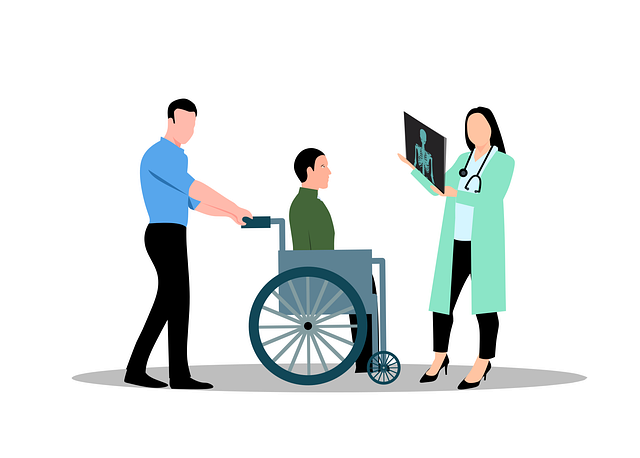Becoming a caregiver is rarely a role someone prepares for in advance. It often starts subtly—a few errands here, a doctor’s appointment there—until one day, the responsibilities pile up. For many families, it’s Mom who steps into this role, juggling caregiving with her career, household duties, and personal life. While caregiving can be deeply rewarding, it also brings emotional, physical, and financial stress. When Mom becomes the caregiver, finding the right support becomes not just helpful, but essential.
The Reality of Caregiving
Across the UK and many other countries, millions of people provide unpaid care for a loved one. According to Carers UK, women make up the majority of unpaid carers, often caring for elderly parents, partners, or disabled children. For many mothers, caregiving becomes an extension of the nurturing role they’ve long played in the family. But caregiving at this level isn’t just about compassion—it’s a demanding job requiring time, patience, and resilience.
Tasks often include managing medications, attending medical appointments, assisting with personal hygiene, handling finances, and providing emotional support. When the primary caregiver is also a mother of young children or a full-time employee, the stress can quickly compound.
Read more:
- Frequently Asked Questions And Answers About Working Moms
- 7 Key Organization Tricks to Balance Work and Family Life
- Starting A Business As A Full-Time Mom: 11 Best Business Ideas
Recognising the Signs of Caregiver Burnout
Mom may appear to have it all under control, but the emotional toll can creep in quietly. Burnout doesn’t always look like exhaustion; it can manifest as:
- Irritability or short temper
- Social withdrawal
- Loss of interest in hobbies
- Feelings of helplessness or guilt
- Physical symptoms such as headaches or insomnia
If you notice these signs in yourself or someone you love, it’s important not to dismiss them. Caregivers need care too.
Why Seeking Support Isn’t a Sign of Weakness
Many mothers feel compelled to “do it all.” There’s a societal expectation that women, especially moms, are natural caregivers who can handle anything thrown their way. This mindset, while rooted in love, can be damaging. Seeking support doesn’t mean that you’re failing—it means you’re ensuring your ability to continue providing care in a sustainable way.
Accepting help can be liberating. It not only eases the burden but also creates a healthier dynamic between the caregiver and the person being cared for. When Mom is overwhelmed, the entire family feels the strain.
Practical Forms of Support for Caregivers
Fortunately, support for caregivers is more accessible than ever. Here are some resources and strategies that can make a big difference:
1. Respite Care
This temporary care allows the primary caregiver to take a break. It can be arranged through local services or care homes that offer short-term stays. Even a few days of respite can restore energy and perspective.
2. Support Groups
Whether in-person or online, caregiver support groups provide a safe space to share experiences, ask questions, and vent frustrations. Speaking to others who truly understand your journey can be incredibly comforting.
3. Professional Home Care Services
Hiring trained caregivers to assist with daily activities or medical tasks can lighten the load. Services range from a few hours a week to full-time care, depending on your family’s needs and budget.
4. Technology and Apps
There are several digital tools designed to help caregivers stay organised. Apps can help track medication, coordinate schedules with family members, or even connect with healthcare professionals.
5. Community and Local Government Resources
Check what’s available through your local council or healthcare provider. Many regions offer grants, transportation services, and other forms of assistance to caregivers.
When a Care Home Becomes Part of the Solution
Sometimes, the needs of an elderly or disabled family member become too great for one person to manage alone. In such cases, considering a care home isn’t a failure but a thoughtful step toward comprehensive, round-the-clock support. High-quality care homes can provide specialized services that improve the quality of life for both the resident and their family.
Families in Suffolk in the UK, for example, might explore Bury St Edmunds care home services, where residents receive expert care in a comfortable, community-focused setting. This kind of support gives caregivers peace of mind, knowing their loved one is in good hands.
Emotional Support for the Caregiver
Beyond practical help, emotional support is equally critical. Counseling and therapy can offer a space to process the complex emotions tied to caregiving. Many caregivers grapple with guilt, sadness, or even resentment—feelings that are natural but often unspoken.
Encouraging Mom to take care of her mental health is essential. Whether through a trusted therapist, a spiritual advisor, or even journaling, emotional outlets play a key role in long-term well-being.
Involving the Whole Family
Caregiving shouldn’t fall on one person alone. Families need to have honest discussions about responsibilities. If Mom is the default caregiver, it’s time to ask: Can others step in, even for small tasks? Could siblings help with transport, grocery shopping, or sitting with a loved one for a few hours?
Involving children in age-appropriate ways can also build empathy and understanding. Even young kids can help with simple tasks like fetching water or reading a book to Grandma.
Planning for the Future
While addressing day-to-day needs is crucial, long-term planning can reduce anxiety. This might involve:
- Creating a care plan with medical professionals
- Discussing power of attorney and legal documents
- Understanding financial resources, such as pensions or benefits
- Researching care home options in advance
These conversations can be difficult but are invaluable for clarity and peace of mind.
Final Thoughts
When Mom steps into the role of caregiver, she often finds herself under the tremendous weight of responsibility, a heavy mantle that can feel isolating and overwhelming. Yet, with the right support system in place, she needn’t bear this burden alone. By reaching out to various resources, inviting family members to share the load, and making self-care a non-negotiable priority, caregivers can cultivate a sense of balance and resilience amidst the chaos.
Caring for a loved one isn’t just a task; it is a profound expression of love and unwavering dedication that flows from the heart. It’s essential that we turn our attention to those who pour so much of themselves into caring for others, ensuring that they, too, receive the compassion and support they so richly deserve in return.

